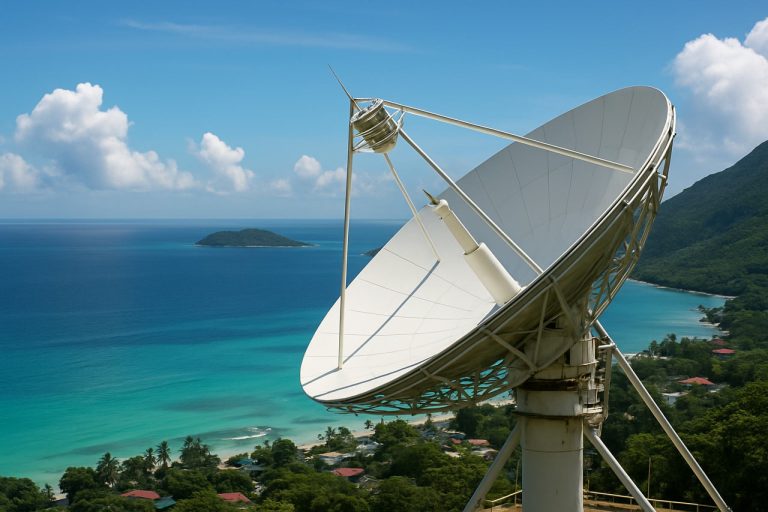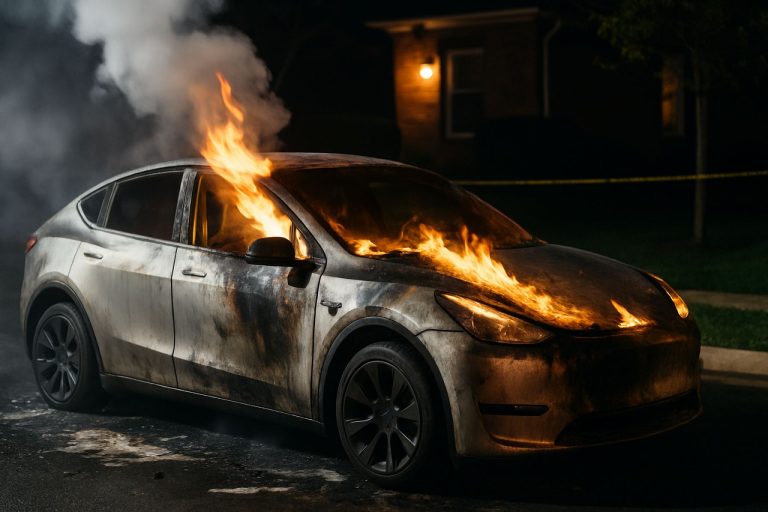
- Electric motorcycles promise instant torque, quiet rides, and futuristic appeal but face slow adoption in the U.S.
- High prices—often exceeding those of affordable electric cars like the Nissan Leaf—limit appeal for younger, budget-conscious riders.
- Poor early sales strategies, including launching EV bikes in traditional dealerships, alienated both loyalists and newcomers.
- Lack of widespread charging infrastructure, especially outside major cities, further restricts electric motorcycle usage.
- Widespread acceptance will require lower prices, supportive dealerships, and stronger charging networks.
- Electric motorcycles could transform transportation, but progress depends on innovation, policy changes, and rider enthusiasm.
Rows of gleaming motorcycles fill the showrooms, neon reflections dancing over chrome and carbon. But for all the excitement pulsing around electric bikes, the air hangs heavy with a question: Why, despite all the promise, are American EV motorcycles spinning their wheels?
The future—the one where everyone glides quietly down city streets or rural highways on battery-powered bikes—could be dazzling. Electric motorcycles offer a jolt of instant torque, surging forward with a hush and a thrill that makes even lifelong gas riders grin. And yet, the reality on today’s roads tells a more complicated tale.
Sticker Shock and Missed Dreams
Picture the Harley-Davidson LiveWire in 2020: a bold, slick machine promising to reinvent an American legend. Its secret weapon? That glorious, whisper-quick acceleration, and the science-fiction hum heard only in EVs. But the $29,799 price tag crashed those dreams for the young, adventurous riders it aimed to attract—especially in a world still reeling from recession, rent hikes, and student debt. Within five years, inflation has stretched that initial price close to an eye-watering $38,000.
For perspective, consider a brand-new Nissan Leaf—an entire electric car—now costs less than the LiveWire did at launch, and many Americans wouldn’t think twice about choosing reliable four wheels over two at those prices. Even after Harley rebadged and rebooted LiveWire into its own company, slashing the price by a third, the least expensive versions climb back above $16,000, while the “affordable” LiveWire ONE sits at $23,000.
That’s a tough ask, especially when competitors like Zero offer compelling models—often with more range—for less.
Uncertain Roads and Shifting Sands
A second challenge lurks beyond your wallet. Early on, Harley-Davidson tried to sell LiveWires at its own dealerships—cathedrals of V-twin tradition, not tech-forward electric upstarts. The move was akin to ordering fries at a coffeehouse: loyalists wanted what they knew, and newcomers felt out of place.
After a slow pivot, Harley opened dedicated LiveWire showrooms in urban hotspots, expanding gradually in the U.S. and—with more enthusiasm—across Europe. But the damage was done. A stumble like this, lasting several years, eroded confidence, leaving customers to wonder: Will my bike have support in five years? Or will it become another ghost in Harley’s checkered experiment history—like Buell, Alta, or MV Agusta?
Infrastructure: The Missing Link
Even for riders ready to leap, charging infrastructure remains a stubborn hurdle. In February, the U.S. Department of Transportation halted funding for the National Electric Vehicle Infrastructure program—a blow to the charging network’s promised expansion. While America’s biggest cities sprout fast chargers, vast stretches of suburb and rural highway remain electrified in name only. Motorcyclists, far from home, are keenly aware.
In Europe, where government investments and public embrace of EVs drive momentum, electric bikes are gaining real traction. Across the Atlantic, the American grid still sputters.
The Takeaway: An Untamed Frontier
Some critics want to lay blame squarely on the slow EV rollout or patchy infrastructure, but this crosses only half the map. The truth is thornier. For electric motorcycles to transcend curiosity and become a movement, three things must change:
- Affordability must meet reality—stripping away aspirational price tags.
- Dealerships and brand strategies need to welcome new riders, not just echo tradition.
- The charging network must finally reach the horizon, not just the coasts.
Electric motorcycles aren’t just silent rebels: They’re signal flares—beckoning a cleaner, faster, more thrilling world. But for now, they remain perched at the edge, engine humming. The next move? That’s up to innovators, lawmakers, and—most of all—the riders themselves.
Why Electric Motorcycles Have Yet to Dominate American Roads—And What Needs to Change
What’s Really Holding Back EV Motorcycles in the U.S.?
Rows of electric motorcycles shimmer in showrooms across America, but the reality outside remains stark: very few hit the road. Why? Let’s dig deeper into the complex challenges of EV motorcycles—and what it will take for them to truly take off.
—
1. The Real Price Problem: Beyond the Tag
Sticker shock is the tip of the iceberg. The Harley-Davidson LiveWire’s original $29,799 price tag soared to nearly $38,000 after years of inflation ([Bureau of Labor Statistics inflation calculator](https://www.bls.gov/))—nearly double the price of some electric cars.
Additional Cost Factors:
– Battery Replacement Costs: High-capacity batteries for electric bikes typically need replacement after 5-8 years, costing $2,000–$5,000 (Electrek).
– Insurance Premiums: Insurers often charge more for EV bikes due to high replacement costs and limited repair options (NerdWallet).
– Resale Value Uncertainty: With rapid tech changes, older EV bikes lose value quickly, making buyers wary of long-term investment.
Quick Tips:
– Look for incentives: Federal and state EV credits can offset part of the initial cost.
– Consider the Total Cost of Ownership: Factor in fuel, maintenance, and tax breaks over 5–10 years.
—
2. Range & Charging: The Dealbreakers
EV bikes generally offer 70–120 miles of real-world range. That’s fine for city commutes but anxiety-inducing for touring enthusiasts—one of the largest buyer segments in the U.S.
Real-World Use Cases:
– Urban Commuters: Ideal for daily 20-40 mile commutes.
– Long-Distance Riders: Still not practical until range exceeds 200 miles and fast charging is widespread.
How-To Hack: Maximizing Range
– Preplan routes with charging stops using PlugShare or ChargePoint maps.
– Travel at steady speeds and avoid aggressive acceleration.
—
3. Market Trends & Forecasts
Despite sluggish U.S. sales, the global electric motorcycle market is expected to reach $30 billion by 2030 (Allied Market Research).
Industry Trends:
– Asia: Dominates sales; lightweight EV mopeds are common.
– Europe: Aggressive policy support and urban e-mobility drive adoption.
– U.S.: Growth remains slow; Zero, LiveWire, and Energica are the primary brands.
Expert Insight:
Motorcycle Industry Council data shows less than 1% of new motorcycles sold in the U.S. are electric (2023).
—
4. Reviews & Comparisons
Models at a Glance
| Model | Price | Range | Charge Time | Features |
|——————— |———– |———— |———— |————————————–|
| LiveWire ONE | $23,000+ | Up to 150 mi| 1 hr (DCFC) | Performance focus, premium tech |
| Zero SRS | $19,995+ | Up to 161 mi| 1.5 hr | More affordable, touring features |
| Energica Ego+ | $25,000+ | 120-261 mi | 1 hr (DCFC) | Italian design, extensive charging |
—
5. Controversies & Limitations
Major Concerns:
– Dealer Resistance: Many traditional dealers lack EV expertise, making post-sale support a question mark.
– Charging Access Gap: Suburban and rural areas have few compatible chargers.
– Performance Perception: While acceleration is thrilling, range anxiety and lack of “engine sound” turn off purists.
Security & Sustainability:
– Battery Sourcing: Cobalt and lithium mining raise environmental and ethical concerns.
– Recycling: Few U.S. programs for end-of-life motorcycle batteries.
Tip: Look for manufacturers with stated commitments to battery recycling and ethically sourced materials.
—
6. Most Pressing Reader Questions—Answered
Q1: Are electric motorcycles worth it today?
Only if your primary use is for short/mid-range commuting and you can reliably charge at home.
Q2: Will prices drop soon?
As battery tech improves and economies of scale kick in, prices are projected to drop 10-15% by 2027 (BloombergNEF).
Q3: What about home charging?
Most EV motorcycles can charge from household outlets, but this is slow (0-100% overnight). Level 2 chargers are recommended for faster charging at home.
Q4: How safe are they?
EV bikes match or exceed the safety of gas models in structure; new models often come with ABS, traction control, and smartphone connectivity for diagnostics.
—
7. Actionable Recommendations & Life Hacks
– Test Ride Before You Buy: Many manufacturers (Zero, LiveWire) offer demo days—experience range and comfort yourself.
– Check State Incentives: Some states offer extra rebates or free charger installations.
– Prioritize Upgradable Platforms: Choose models with firmware updates and modular battery packs.
– Buddy Up: Join local EV rider groups for real-world advice and support.
Bonus: Charge whenever the opportunity arises—don’t wait for 0%! Range anxiety shrinks with a proactive approach.
—
Conclusion: The Road Ahead
Electric motorcycles in the U.S. face technological, cultural, and infrastructural speed bumps. But progress is accelerating: falling costs, expanding infrastructure, and new, versatile models point to a livelier future. Riders, dealers, and policymakers all have critical roles to play in shifting gears toward a cleaner, thrilling two-wheeled revolution.
For updates and community info, visit:
– Motorcycle.com
– Harley-Davidson
– Zero Motorcycles
– Electrek
—
Keywords: Electric Motorcycle, LiveWire, Zero Motorcycles, EV bike market, charging infrastructure, motorcycle EV incentives, electric motorcycle range, affordability, industry trends
Quick Tip: Considering an electric motorcycle? Calculate your real-world range needs and local charging access—these two factors are make-or-break for EV ownership today.



